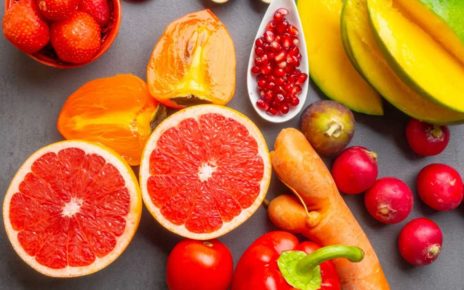DuPont Nutrition & Biosciences has launched its latest enzyme solution for adjunct liquefaction: AMYLEX 6T. The enzyme enables numerous business gains for breweries and distilleries alike, according to DuPont, including the ability to expand into new segments with locally-sourced raw materials, improve productivity, maximize yield, ensure consistent quality and ultimately increase profitability. The move from DuPont comes amid a flurry of consumer demand for craft beer and increased pressure to maximize production capacity, reduce waste and beer losses. Additionally, the necessary savings in energy and water use must be achieved to continue working sustainably.
“This solution helps breweries become more sustainable and expand into the affordable beer segment. Using locally grown raw materials, including high-tannin sorghum, is high on the agenda of brewers who are pursuing the UN’s Sustainable Development Goals, yet wish to make no compromise on quality,” Jens Eiken, Global Product Manager of Brewing & Distilling Enzymes at DuPont tells FoodIngredientsFirst.
“Every brewer faces unique challenges that can have significant impacts on brewing processes ranging from climatic conditions to variations in raw material availability and quality,” Eiken continues. “Our enzymes help breweries adapt to various barriers, while maximizing efficiency, consistency and quality in every brew. For distillers, the emphasis is on continuous process improvement and higher productivity, yet the advantages are similar to those for breweries.”
According to DuPont, AMYLEX 6T is the latest enzyme to meet this mark, precisely engineered with a high proportion of endo-alpha-amylase activity to specifically target viscosity reduction, which de-risks process issues. This is true even for tannin-rich raw materials like sorghum. For brewers using 100 percent corn, it offers an even higher extract yield.
This novel solution also requires very low dosage, delivering 20 percent lower peak viscosity than the benchmark, up to 20 percent shorter liquefaction time at a very broad pH range (from pH 4.8 to 6.0) and a higher-than-normal “first time right” rate, reducing the risk of costly production re-runs and wasted product. This enables potential for higher profits, additional opportunities for brewers to get creative with their brews and for distilleries to improve performance.
“The correct dosage of AMYLEX 6T varies according to local conditions, adjunct type, water-to-grist ratio and brewing protocols,” adds Eiken. “However, its trial performance has been outstanding. We’ve experienced a significantly higher extract yield with a lower dosage of AMYLEX6T, as compared to the benchmark.”
Eiken also notes that long hot summers cause many people to dream of drinking a nice cool beer. “Unfortunately,” he says, “heat and drought reduce harvest yield leading to higher prices for malting barley. High temperatures and lack of rain also cause structural changes in the barley kernel such as higher protein levels, higher Free Amino Nitrogen (FAN) levels, lower limit dextrinase levels and the risk of reduced final wort and beer fermentability. Challenges for brewers can include finding measures to overcome higher gelatinization temperatures, lower speed of mash separation and higher costs.”
“All our innovations are centered around understanding customer needs, and we have ongoing conversations with our customers. On average, taking a new solution to market can take up to 18 to 24 months,” adds Eiken.
Strengthening its positioning
DuPont has been very active in the global distilling industry for years, so this new solution is meant to strengthen the company’s position in industry, he affirms.
DuPont’s LAMINEX and DIAZYME enzymes help brewers to overcome these obstacles to maintain high production output and quality while reducing costs and CO2 emissions, Eiken further flags.
In March, an enzyme solution marketed as holding an “unprecedented ability” to maximize beer flow, especially on barley, was released to the Australian beer market by DuPont, branded as Laminex MaxFlow 4G filtration enzyme.
Modern brewing enzymes are valued for their functional solutions to many of the inherent challenges in beer brewing – from faster processing and limiting capital expenditure, to reducing environmental impact by saving energy. “The product is new to Australia, yet was already available in other regions,” a DuPont spokesperson previously told FoodIngredientsFirst.
Moreover, craft brewers have driven a revolution in the brewing industry worldwide by offering unique, premium flavors and taste experiences that resonate with beer drinkers. Craft beer consumption in the US, for example, has experienced massive growth in the past decade. Last July, Joana Carneiro, Business Director Beverages, DSM Food Specialties said that this has opened up the market to new consumer groups, including those that do not necessarily drink regular beer. For example, 20 percent of women in Belgium, surveyed by DSM, said that craft beer is the only beer they consume,” she previously told FoodIngredientsFirst.
Meanwhile, the economic impacts of COVID-19 are being felt in the brewing industry. The Brewers Association (BA) has released its 2019 industry growth report that shows slowing growth for the craft beer industry. In 2019, small and independent brewers collectively produced 26.3 million barrels of beer and realized just under 4 percent total growth, increasing craft’s overall beer market share by volume to 13.6 percent. This will probably be the final positive growth report as 2020 will surely reflect the pitfalls of COVID-19, says the BA.
“Although craft brewers entered 2020 on a solid foundation, the beer landscape is dramatically different today than it was just a few months ago. Breweries will be facing new realities due to the pandemic with extended closures, tight cash flow, societal shifts, and other economic variables in play. These 2019 figures will allow us to see how much COVID-19 affects small brewer production and jobs,” says Bart Watson, Chief Economist at the BA.
Source: Food Ingredients First










